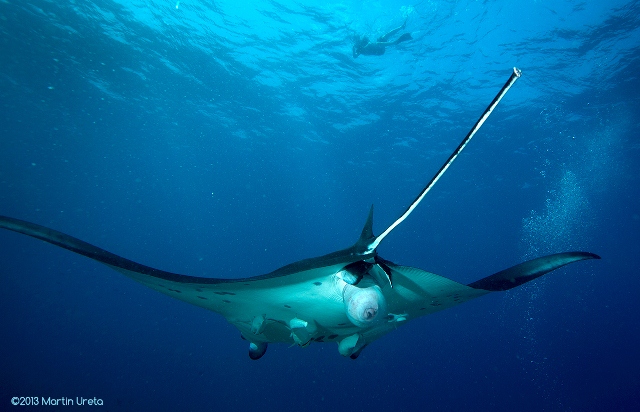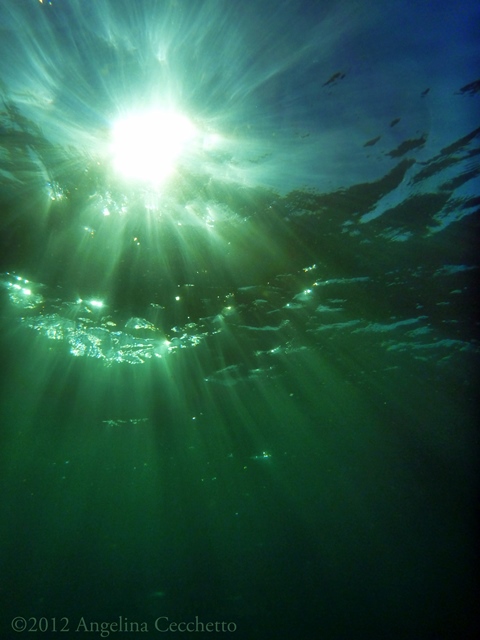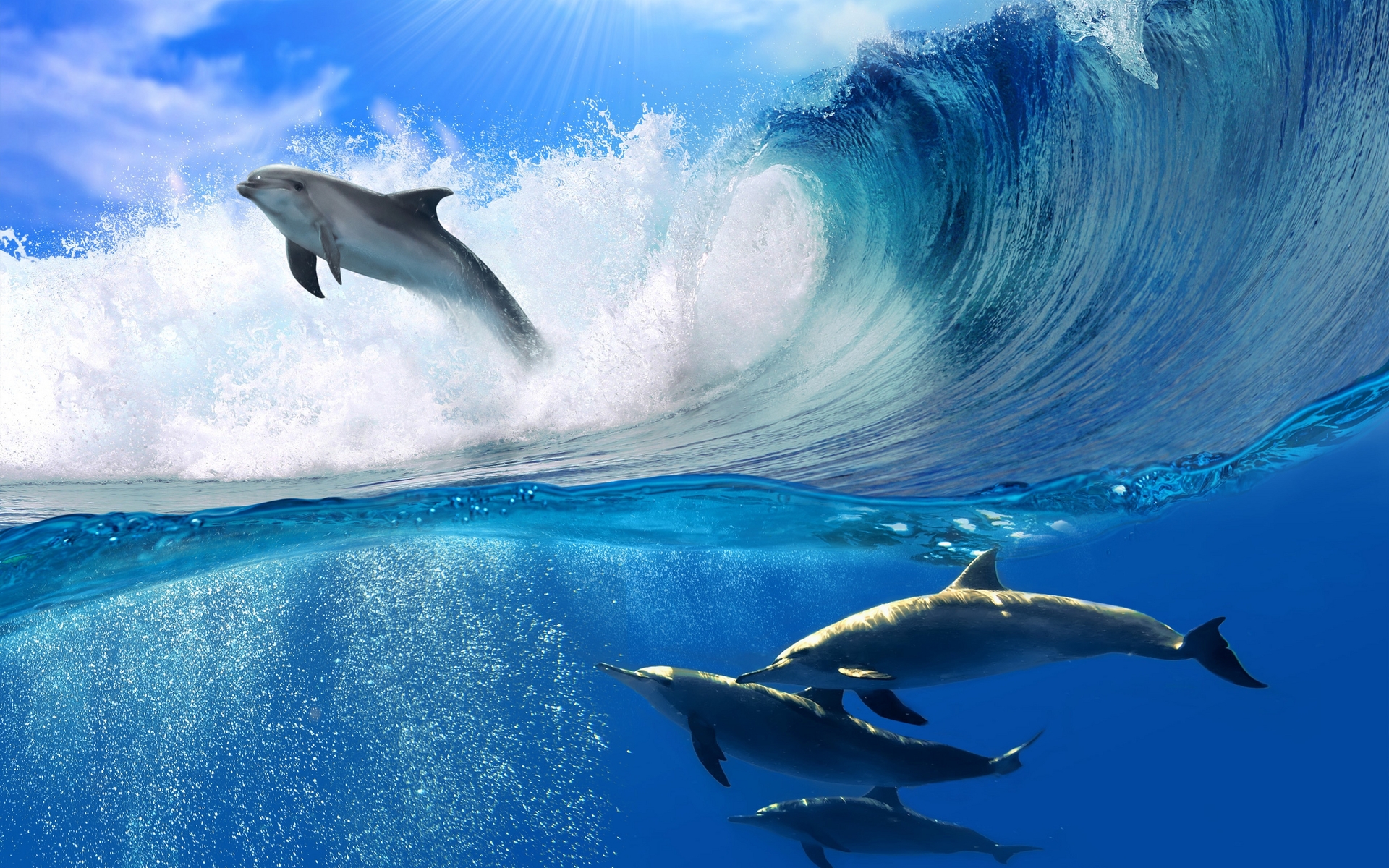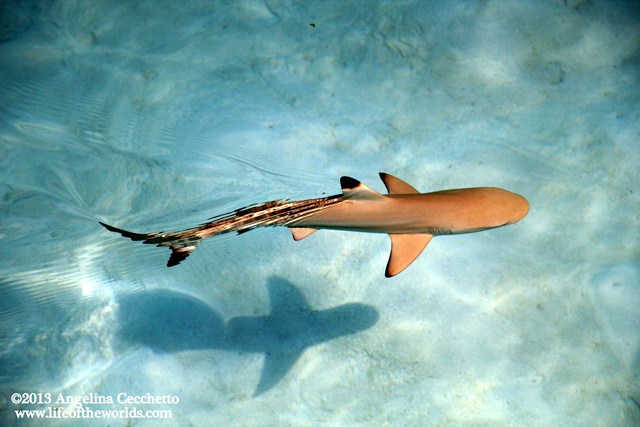
Photography: ©2013 Martin Ureta. All Rights Reserved.
When my friend Martin Ureta came to the Maldives for a dive holiday he was far from imagining that he would be the amazingly lucky and first ever photographer of a giant oceanic manta giving birth in its natural environment!
Despite a growing number of scientific studies on manta populations very little is known thus far about the giant oceanic Manta ray also known as Manta Birostris. No one has ever seen them give birth so far. So it would seem that Martin is the first person to have ever photographed a Manta Birostris in the process of giving birth in its natural environment, and this happened during the first week of January 2013! The shot was taken during a dive in the southern part of the Ari Atoll in the Maldives in a dive spot famous for spotting mantas. During the dive a group of 3 Mantas Birostris were twirling over the shallow reef to feed to the delight of the group of divers observing their graceful underwater moves. The divers were all mesmerized by the spectacle and couldn’t believe their luck to have spotted the mantas and have them twirling over them for some magical minutes. Martin was busy enjoying the show and capturing this underwater ballet on camera. None the divers, nor their guide noticed anything particular happening with the mantas during the actual dive but when they came back to the island and viewed the pictures we noticed something unusual in one of the manta’s pelvic area. I immediately thought this might be the unbelievable capture of a manta birth but I am not a marine biologist.
When he returned from holidays, Martin contacted The Manta Network in California to get an opinion on what is actually happening on the photo. Robert Aston, The Manta Network Executive Director shared the photo with Dr. Robert Rubin who is one of the foremost experts on Manta Birostris and from their very enthusiastic feedback, it would seem that the picture is indeed the first picture of a Manta Birostris giving birth.
We would like to use this picture as a flagship picture to defend mantas and especially the giant oceanic mantas. We hope this picture will create the awareness that mantas are some of the most peaceful and graceful underwater creatures. Very little is known about them so far but all the studies being led are highlighting a drastic decline in their populations. According to the IUCN “The rate of population reduction appears to be high in several regions, as much as 80% over the last three generations (approximately 75 years), and globally a decline of 30% is strongly suspected.”
The IUCN categorized the manta rays as “Vulnerable” in between the “Near Threatened” and “Endangered” species. There are a various factors that led to this critical state of affairs.
The first main threat comes from fishing as mantas are highly valuable in international markets and in particular in Asian markets. As Africa Geographic’s Science Editor Tim Jackson[3] mentions in his article entitled “Myths about manta rays”: “In traditional Chinese medicine, it is believed that the gill-rakers of mantas and other rays cure chickenpox and alleviate high blood pressure. They don’t!”
The fact that mantas are easy to spot from the surface due to their large size, and easy to fish out because of their slow swimming speed and the fact that they don’t avoid humans, make them a very easy prey for many fishing boats.
Another important factor to understand is mantas reproductive cycle. Although there is a lot to be learnt still, it is thought that Mantas Birostris have a gestation period of one year and generally give birth to a single pup at a time. It is still not quite clear whether females have a pup per year or one every 2 years. At this rate it is important to understand that if the fishing rate is higher than the manta rays reproductive rate, they will soon be extinct.
Another factor to mention is the anthropogenic factor such as water warming and pollution which indirectly affects mantas habitat although it is pretty difficult to evaluate in which measure.
To conclude I would say that in the light of all of the above it appears quite vital that worldwide measures are taken as soon as possible. Some countries have already applied strong measures to protect mantas as the UICN states, mainly the United States, the Republic of Maldives, the Philippines, Mexico, Ecuador, Australia and New Zealand. Whilst this is a great start, Mantas are in danger and need a strong global worldwide protection.
Mantas are some of the most peaceful and graceful underwater creatures I have been given the chance to see. It would be a lot more than just an “awful shame” to loose such a magical underwater specie in the name of an unfounded cure property.
By Angelina Cecchetto on 7th February 2013





